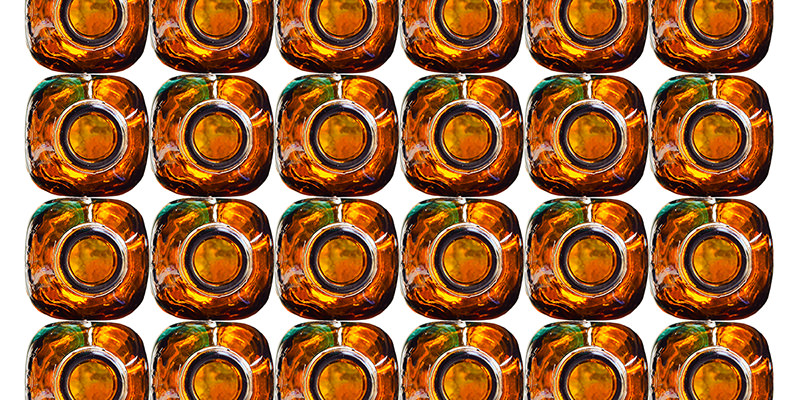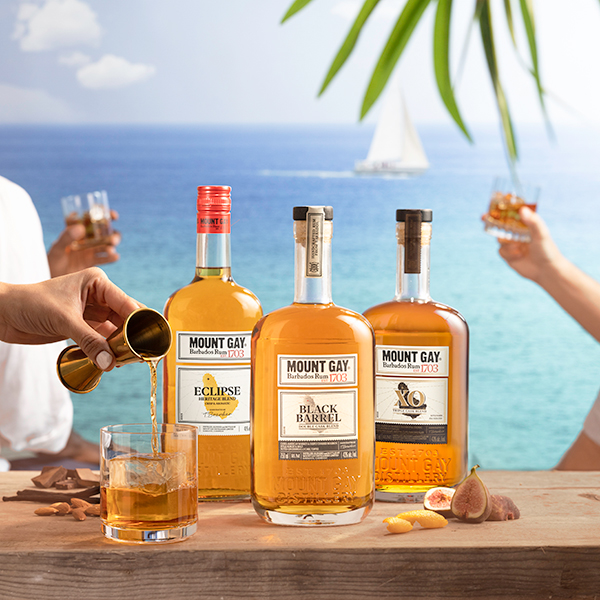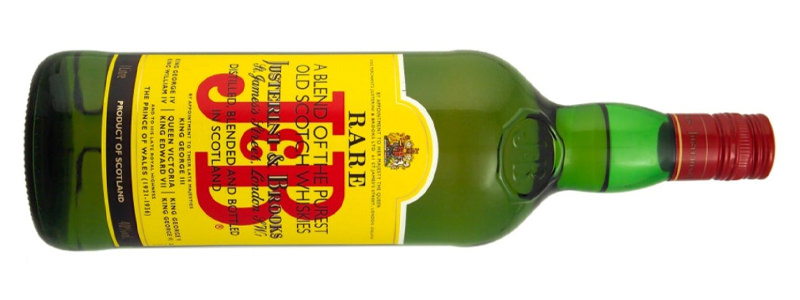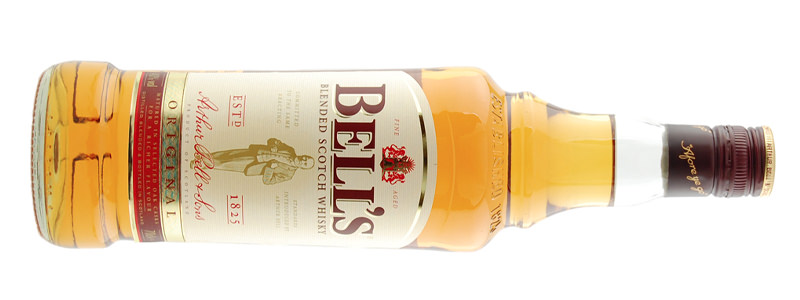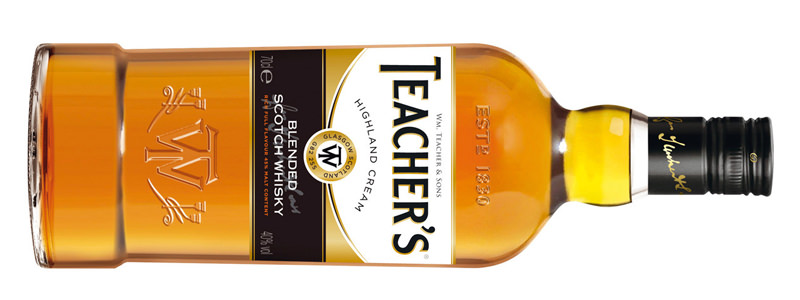
We’ll admit it. We make a bit of a big fuss over single malt whiskies. Also, higher-end blended whiskies. We love to fawn over their caramel hues, their often unabashed and nearly sensual malt-forwardness, those endless layers of nuance and expression. And yes, sometimes we love to do this because of how much we paid for said Scotches.
But for all our love of higher-end Scotch whisky, it seems like the single malts and fancy blends aren’t always the ones that rank (see whisky critic Jim Murray’s love of Japanese whisky). In fact, among the 20 best-selling Scotch brands in the world, a lot are what you’d call “value” Scotches, stuff you can get for under 20 bucks a liter and possibly bring to a college party. Some may not even be names you recognize, either because you stick to your Ardbeg’s and Oban’s or because they’re sold primarily in Europe, Latin America, or Asia. Names you might expect to appear on the list, like The Glenlivet or Glenfiddich, rank Nos. 21 and 22, respectively.
Before we delve into the list, one thing to keep in mind: these are brands, e.g. “Ballantine’s,” which means anything within that brand’s portfolio might contribute to its sales. Within those brands you’ll notice a trend: brands with low-cost, accessible blended whiskies are among the top sellers worldwide. And not always in the U.K. (in fact some not at all in the U.K.).
Most of the whiskies below are blends of malt and grain whiskies (higher priced blends tend to have more malt), though as many as 50 different whiskies can go into one blend. In fact, the way any of the blends below maintain their distinctive character is with a “fingerprint” whisky (or several), added in such a proportion as to “show up” in the mix and differentiate what’s in the glass. Again, given the fact that most of these are around 20 bucks, you could actually buy a couple bottles and compare. Or save up, yes, for single malt.
Johnnie Walker
You know, the little guy walking across the color-coded label? Obsessions (rightful or not) over Blue Label? Even if you don’t drink Scotch, you know it. The largest Scotch whisky brand in the world, founded in the early 19th century by an actual dude named Johnnie Walker.
Ballantine’s
This one’s so popular, it’s actually kind of hard to find in Scotland, or the UK generally, but you can definitely knock it back in the States. Started by George Ballantine and made of 50 single malts, you may remember (or not) college parties fueled on $20 jugs of Ballantine’s Finest.
Grant’s
Yet another Scotch whisky that can boast a $20 liter, which may account for its sales. The Grant’s brand was founded in 1887 and the whisky—softly fruity and delicate—is easy to drink. You’ll know it by the slightly pointy bottle (not to be confused with Glen Grant Speyside whisky).
Chivas Regal
In 1843, Chivas Brothers grocery was actually granted a “Royal Warrant” to supply some of their gourmet goods to none other than Queen Victoria. Fast forward a century and a half and they’re still on top, though today best known for their 12 and 18 Year blended Scotches, which we assume Queen Elizabeth doesn’t drink. Or does she?
J&B
You could spot that yellow label from across a liquor store. Surprisingly, the initials stand for Justerini & Brooks, the former being an Italian (we smart) who ended up in the UK in a roundabout, fall-in-love-with-opera-singer way. Another blend available for a twenty, and the most popular in Europe, fruity with a little wood spice. Drinkable. Ahem.
William Lawson’s
Another brand known for its blends (noticing a pattern?) with roots in the mid-19th century. Get this one for under twenty bucks, and bask in the affordability of it all. A blend on the sweeter side, fruity and biscuity with a woody, hot finish.
William Peel
William Peel is a little harder to pin down than most super-popular brands: there seems to be both a cheaper blended line and apparently a Single Malt line that comes from Speyside. We’re assuming the blend is what sells more; we’re just not sure to whom.
Dewar’s
Most everybody knows Dewar’s. Even non-Scotch drinkers have to remember those bizarre ads where the girl from Mallrats gets intensely cryptic with life advice and talks to some off-screen disembodied “Angus” character. Beyond some advertising missteps, Dewar’s has done right by bringing an arguably more complex “White Label” blend to market a century ago.
Label 5
A lot of the affordable blended whiskies are actually drunk around Europe, and this one’s actually owned by a French company, La Martiniquaise. Its basic “Black” blend, which has actually won some awards, is both lighter and sweeter on the palate with light fruit and a bit of lemon grass.
Bell’s
These guys get instant points because they have actually made commemorative decanters in the shape of bells (even one to celebrate Will and Kate, awww). They’ve got more than design literalism going for them; the basic blend is the UK’s most popular, with notes of Caol Ila smoke and some salinity poking around honeyed fruit and lightly nutty malts.
Passport Blended Scotch Whisky
A pretty austere-looking bottle for a fairly blunt blend—a bit up-front with the alcohol. Apparently a best-seller in Brazil, so Olympians can enjoy and/or drown their sorrows in it. Though with a sharper woodiness and just a bit of cereal sweetness, it’s probably best taken in smaller-than-sorrow-drowning quantities.
Buchanan’s
Another whisky with a big fan base in Latin America (and the States), with more depth in the blend than you might expect. Buchanan’s actually created what became the Black & White blend (see below), but the 12 Year is the way to go. Honey toast with butter, a little spice and fruit. You know. Breakfast, but Scotch.
White Horse
More malt in this particular blend, which won Jim Murray’s 2007 Blended Whisky of the Year. Some chewy fruit with malty notes and a bit of smoke, thanks to the Lagavulin in the blend. Meaning, yes, this particular blend would be Ron Swanson-approved. (Sorry, who are we kidding, he’s a single-malt man for life.)
Clan Campbell
It’s easy to tell they love this stuff in France. Not just because it’s one of the few places it’s actually available, but there’s a French Wikipedia page about it. The name sounds very old and Scottish, but this is actually a younger 20th-century brand. Some spice and a bit of warm fruit.
Teacher’s Highland Cream
Very tempting to assume this is what teachers drink after a rough day at school. And maybe they do. Despite the “cream” in the name, the “fingerprint” malt here is smokey malt from Ardmore, although that’s restrained behind malty toffee-nuttiness and rounded fruit.
Sir Edward’s
Also owned by La Martiniquais and adored by the French and also a blend (the patterns just keep coming up). A bit rough around the edges but still some bits of honey toast and spice mingling in the heat.
100 Pipers
A blend adored in India and Thailand (and definitely bottled in the former), albeit named after a martial Scottish ballad. Ridiculously inexpensive (under $15 for a liter), though you won’t get much nuance here. Sharper with a little hint of smoke and some graininess. Though not sweet. No, not sweet.
Black & White
The original James Buchanan house blend, with a label (eventually) emblazoned with not one but two little terriers. A lower malt blend with not a ton of structure, though a tiny bit of fruit sweetness tempers the heat. Better for mixed drinks (and yes, those exist).
Grand Old Parr
A squat, frosty bottle with some serious historic interest, which is apt since it’s named after the supposed 152-year-old Thomas Parr, whom we like to assume lived on Scotch. What sells here most commonly (none of it’s sold in the U.K.) is the 12 Year, a nice little mosaic of malt-forward cereal and dried chewy fruit laced with a bit of smoke and beachy salinity.
Vat 69
Number 20 rings in with a slightly less subtle label than most Scotch (even lower-end blended Scotch) drinkers are used to, but it’s actually over a century old. As you might guess from the name, there was some historic success with the blend in a 69th vat many years ago, the stuff was bottled, and the rest is history. Nutty, softly fruited, toast-and-spiced history—for (one more time) twenty bucks.

